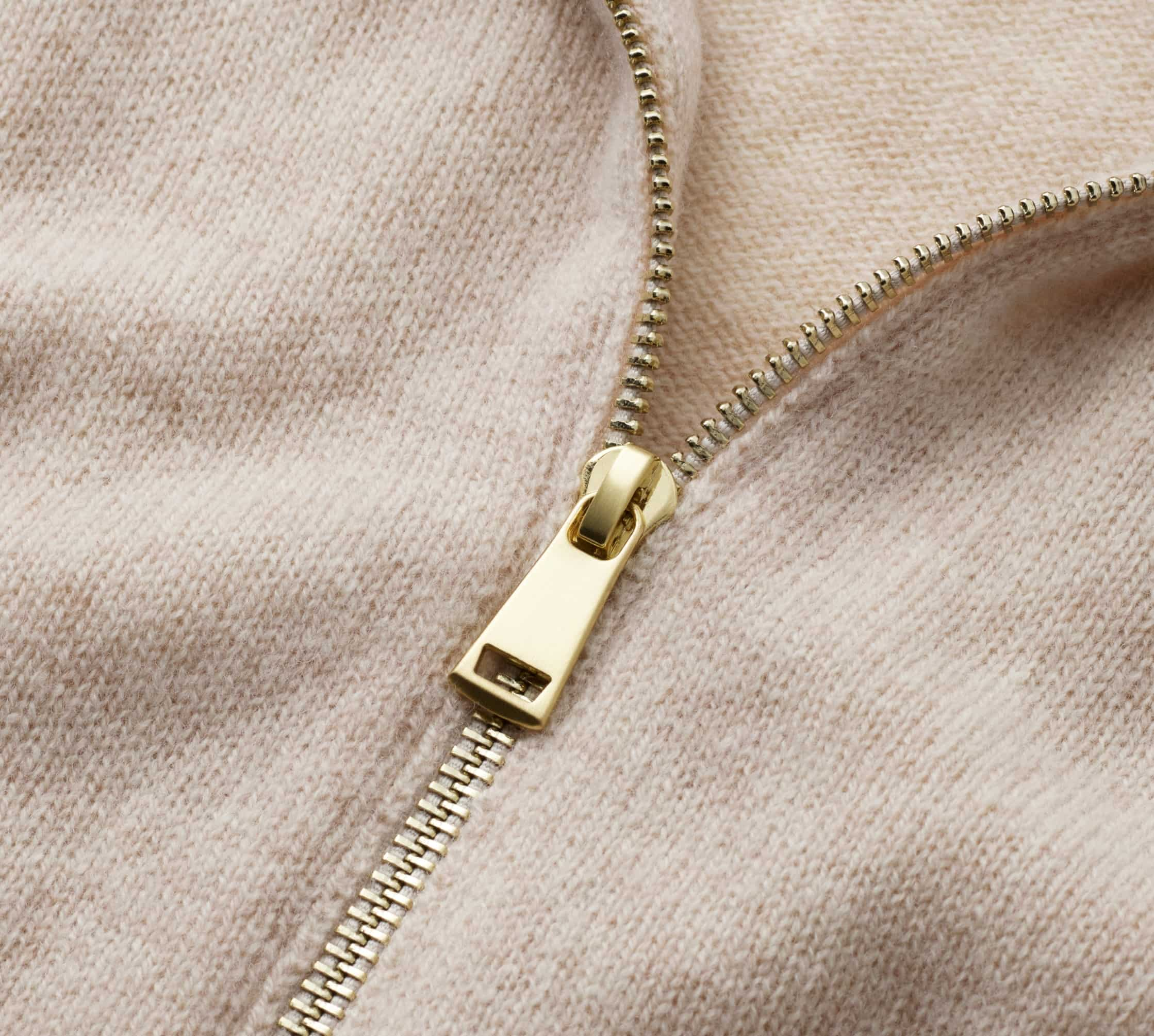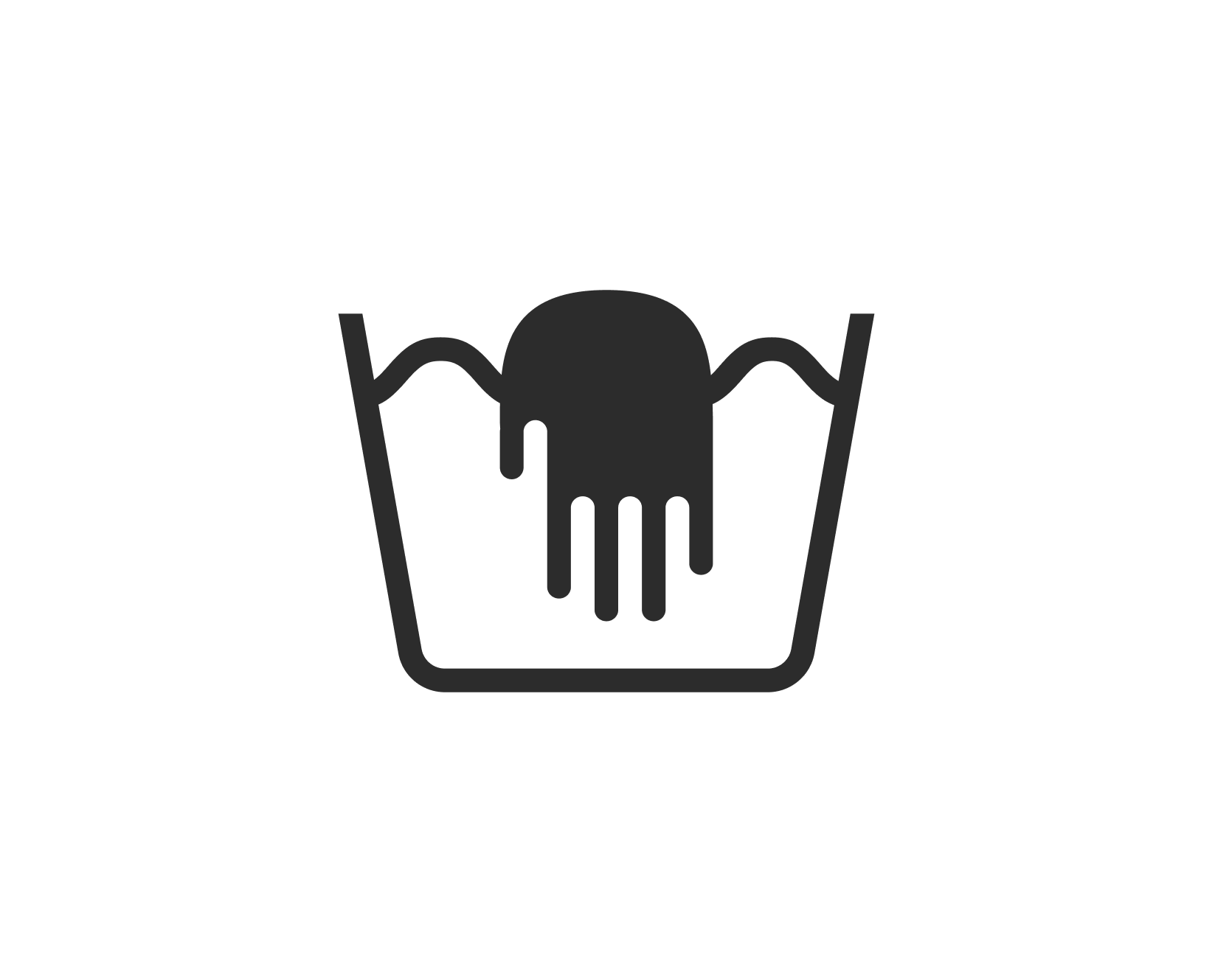
KNITWEAR 101: How To Care For Your Knitwear
If knitwear is an investment (and good knitwear always is) then knowing how to care for it is the key to ensuring a return. Most of us have been there: you buy an amazing jumper or cardigan, only to misread or misunderstand the wash instructions and end up pulling a child-size item out of the washing machine, that no amount of gentle stretching or re-shaping can salvage.
That’s where our Knitwear 101 guide comes in. We’ll outline the best ways to care for your knits, from decoding confusing instructions and washing machine symbols, to the best way to remove bobbles and pilling. After all, when it’s properly cared for knitwear should last for years, not just a season.

WHY DOES KNITWEAR SHRINK?
The main reasons your knitwear shrinks after washing are heat and movement, aka, the water is too hot and it’s been moved around too much in the machine drum or by hand.
Water that’s too hot opens the scales on the fibres and allows water to penetrate. This causes the fibres to swell and later contract on cooling down. That’s one of the reasons why a piece of shrunken knitwear often feels tight in texture.
Knitwear is also prone to shrinkage when it’s moved around too much, whether it’s in the washing machine drum or during a vigorous manual hand wash. Too much agitation causes the wool fibres to rub and lock closer together, a process known as felting. This is what shrinks the wool and changes its texture and unfortunately, felting is not fixable.

CAN I REALLY MACHINE WASH KNITWEAR?
The short answer is yes. The long answer is also yes: but you have to be careful and a manual hand wash is generally preferred (but who has time for that). While ‘hand wash only’ may have been drummed into us when it comes to caring for natural fibres like cashmere, wool or alpaca, certain washing machines have the correct setting that means you can safely wash your knitwear.
There are 5 main areas to consider when it comes to machine washing knitwear safely.
1 | Setting
This is the most important, because if you choose the wrong setting, it’s like a domino effect that usually ends up in shrunken yarns.
Knitwear should be washed on your machine’s ‘hand wash & wool’ setting. Most modern machines have a different setting for ‘hand wash & wool’ and ‘delicates’, we advise always choosing the former. If in doubt, hand washing by hand is probably the safest option, and don’t worry, we will explain how further down.
2 | Spin Cycle
Choosing the right spin cycle is arguably the most important factor in machine-washing knitwear. In a word, or two: low + slow. Just like temperature, if it’s on a wool hand wash setting then your machine should automatically put it on the lowest spin cycle, but it’s always worth double checking. Most settings have incremental settings ranging from 400-1400 RPM, which means rotations per minute. Wool fibres do not like movement, so the lowest setting and the least amount of spin time is always the safest option.
3 | Temperature
Your hand wash & wool cycle setting should select the right options for you, but if in doubt, the water temperature should always be as low as the machine allows - usually 20 or 30C. The main factors that cause shrunken or damaged knitwear is heat and movement, that’s why choosing the lowest temperature possible is key to prevent the yarns from contracting.
4 | Detergent
Fabric softener or overly scented detergent should not be used when washing knitwear. Instead, look for a dedicated wool or delicate detergent. This kind is specially formulated to be gentle, to not only clean, but to protect the wool fibres. Since wool is a protein-based fibre, special care has to be taken to protect it from damage and preserve its natural oils. Wool detergents are formulated without harsh chemicals and are PH-balanced - both key considerations when it comes to protecting the fibre’s proteins.
5 | Aftercare
Due to the gentle spin cycle, knitwear will come out of the machine quite wet, but that’s fine, whatever you do, do not wring out your knitwear. After washing, knitwear should be dried on a flat surface - we recommend laying it over a clean towel that will soak up the excess water - swap it out if it gets too damp. Hanging knitwear is never recommended, especially while wet, as the weight of the wet fabric will cause it to stretch and change shape.
This is also the perfect time to gently re-shape the item if needed. It shouldn’t need any aggressive stretching, just gently arrange the piece so it looks the right shape while it’s laying flat.
DECODING THE LABEL
Let’s talk about symbols. Our knitwear labels are generally the same per fabric composition. For example, if you have a merino and cashmere knit, whatever the shape or style, it will likely have the same care instructions. Some styles such as a 100% cotton knit, may have different care instructions because cotton is a more durable fibre and can withstand a normal wash and spin cycle. But it’s always important to check the label and understand what the symbols mean. Let’s run through some common examples.

Hand Wash
You’ll see this on almost all our natural-fibre knitwear care labels that use cashmere, merino wool, lambswool or alpaca.

Delicate Wash
Usually suggested for lingerie and blouses. On some washing machines this is a suitable choice for washing wool as it still uses a low temperature, however this setting may have a faster or longer spin cycle - which is something to be wary of.

Do Not Bleach
This one is pretty self-explanatory, but don’t use any strong bleach cleaners when washing knitwear. This includes stain removal sprays.

Do Not Tumble Dry
We’ve established that excess heat and movement is the enemy of natural-fibre knitwear, so tumble dryers are a no-go.

Suitable For Ironing On Low Heat
You might see this symbol on other clothing labels and it’s important to note how many dots are in the iron. One dot = low heat. Two = medium and three = high.

Dry Clean
This symbol is for the dry cleaners and it indicates what kind of solvents are safe to use with the garment. The underlined P signals that the piece should be washed using a mild process.
Knowledge is power, so we’re including a few extra symbols that might mean the difference between knitwear life or death.

Do Not Wring
If you need to remove excess water after washing, then you can gently squeeze the item, but avoid twisting and wringing.

Do Not Dry Clean
If the label has this symbol, then it means the item is not at all suitable for solvent cleaning.

Dry Flat
Lay it flat over a dry towel and gently reshape. Our labels don’t have this symbol, but they do have instructions about reshaping and flat drying.
HOW DO I HAND WASH?
Wary about trusting your washing machine settings with your precious jumpers? Then manual hand washing is the way to go, plus a handy skill to know.
Water temperature. The water temperature should be cool to the touch, however we know this might be slightly different for everyone. 20-30 C is preferable. Fill a large receptacle like a sink or bathtub, just enough to submerge the garment.
Detergent. Find the right one. It should say it’s suitable for wool and delicates on the bottle. Pour the recommended amount into the water and gently mix it around.
Submerge the garment and gently move it around. Hand washing should be gentle with minimum agitation. Let it soak for 5-10 minutes.
Drain the water and gently rinse the garment by submerging it in clean water. Repeat until the water runs clear.
Gently squeeze out the excess water by hand or roll it up in a towel- no wringing.
Lay it out flat over a clean towel and gently arrange it into the right shape. Leave it to dry away from direct heat.

BETWEEN WASH HACKS
In general, it’s recommended to wash your knitwear as little as possible. But there are some hacks you can do in between wears and washes to keep your pieces looking fresh.
Knitwear Comb
Designed to enhance your knitwear's longevity, our wooden knitwear comb removes pilling from your cosiest investments. To use, simply lie your jumper or cardigan on a flat surface, pull it taut and gently comb in one direction. Please note, this is only suitable for plain-stitch designs, do not use it on ribbed, open-work or cable-knit styles.

Storage
Knitwear should never be placed on hangers, especially if it’s a chunky, weighty design. The structure of the knit means that over time the weight of the jumper will stretch out and misshape. Instead, store them flat + folded.
Garment Bags
Whether it’s between each wear or as you swap over your seasonal wardrobe, storing your knits in a garment bag is a great way to keep them protected from the common clothes moths.
Cedarwood Products
Cedar wood is said to repel the common clothes moths, so using cedar hanger spacers, drawer inserts or a natural cedar oil spray can be an extra way to protect your knits.
Ready for more knitwear?
Explore our knitwear edit
